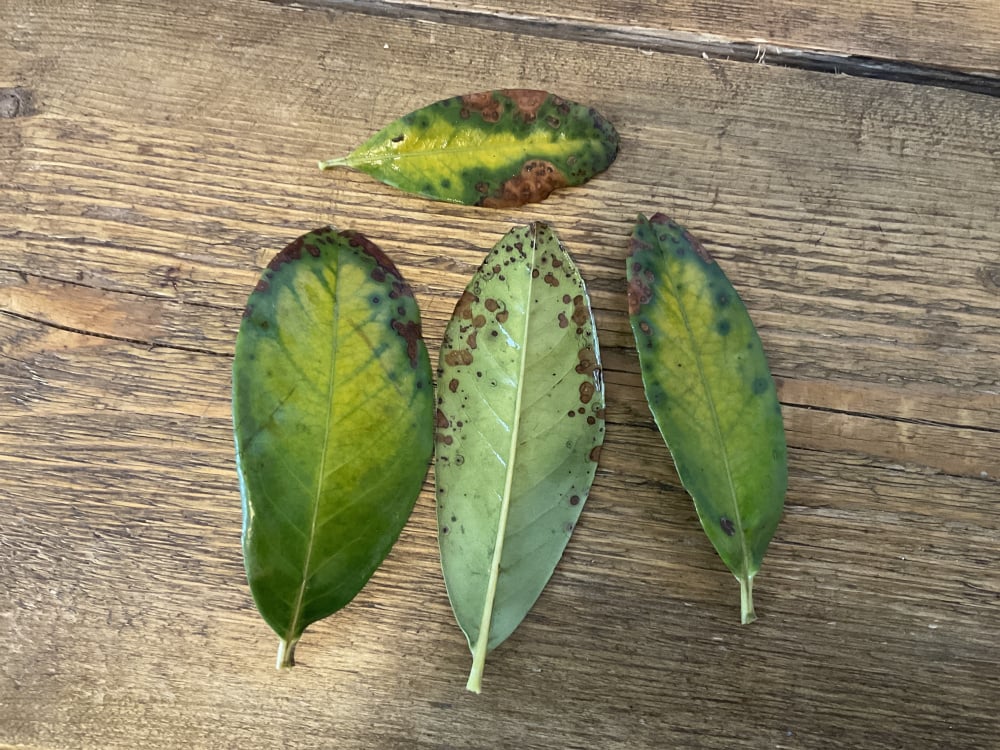This Forum will close on Wednesday 27 March, 2024. Please refer to the announcement on the Discussions page for further detail.
Cherry laurel leaf disease
Hi
can anyone identify what specific disease this is?

can anyone identify what specific disease this is?

0
Posts
Evergreen does not mean "green forever", the leaves have a life span.
"Have nothing in your garden that you don't know to be useful, or believe to be beautiful."
"Have nothing in your garden that you don't know to be useful, or believe to be beautiful."
Did they really require fertilising? Established hedging doesn't need food, and can be counter productive if plants are struggling. It's better if you can improve the soil regularly by mulching with any organic matter you have
It's common for them to get damaged foliage which gets dropped and replaced, so it's not necessarily a problem. If the soil's healthy, they shrug that off.
Any more info you can offer will be helpful
I live in west central Scotland - not where that photo is...
I reckon last year I was probably sweeping up a good 100 leaves each week during the summer ( it makes you think at that rate they would soon be bear but it must have been replacing with new growth ( hard to notice) as they did remain healthy and bushy.
I had sort of hoped with another season that it would be less dramatic than previous years (like the ones in my back garden). Easy to get to wrapped up in the multitude of reasons for why it happens leading to me applying fungus spray, mulch, fertiliser, oh and some sequestered iron). Maybe I am better off just leaving them alone to do their thing :-)
I appreciate that people often 'buy big' to give privacy and instant cover, but it can often lead to other problems. I'll give you the link to the very, very long thread about laurel. You'll see what I mean if you read a few pages - the same advice many times about cutting back
https://forum.gardenersworld.com/discussion/656523/help-needed-please-with-laurel-hedge-issues/p1
I live in west central Scotland - not where that photo is...
I used to have a very big conifer hedge where they are now sited. Gardener took that out and had to use a mini digger to get the trench sufficient to plant the cherries. Added some omecote preplant and a few bags of soil improver at the time (along with the old soil) to top it all back up.
The local seller advised cutting back the plants by a third. I have done some cutting back / pruning as I want them to be bushy. Albeit I probably did not cut back quite as far as they suggested (maybe a foot or two).
Watering wise I have been really good. 2 or 3 times per week during peak summer stood out their with a hose pipe on full flow for about 20 mins each time.
They were quite big / mature so sounds like they may just need that much longer to fully establish themselves, and at this point their is little more to do other than prune and water.
Even when it rains, the foliage prevents water getting right in at the base where it's needed.
Probably would have been better to cut back much further, but I can understand how that's a bit nerve wracking if you haven't done it before!
Just keep doing what you're doing though. They're tough, so as long as the soil's decent they should do well. Regular additions of organic matter is always the best solution for hedging, rather than additional 'processed' food.
If you can post pix of the whole hedge, that will always help. Sometimes there's an obvious thing that we would see in a pic, but not from a description
I live in west central Scotland - not where that photo is...
No evergreen is specifically 'green' 365 days a year. They all have leaves which die off and are replaced. That's normal.
The drainage/moisture retention capabilities may be slightly less favourable on the side with paving, so there's a little more yellowing, but other than that, I'd be very happy with that hedge.
I live in west central Scotland - not where that photo is...